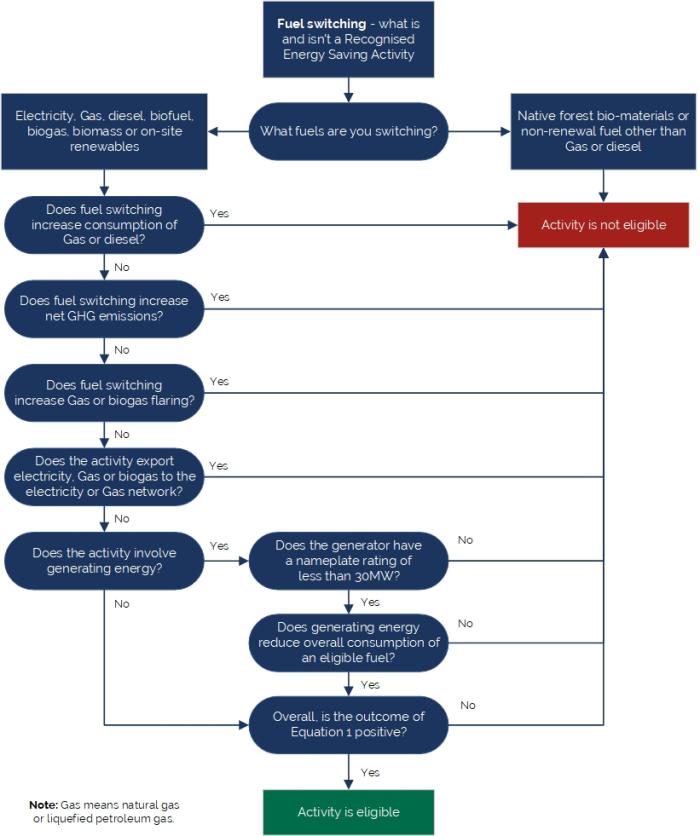ESS fuel switching
The ESS Rule has expanded to include new fuels in addition to electricity and gas. These fuels can be used for fuel switching activities in the:
- Project Impact Assessment with Measurement and Verification (PIAM&V) method
- Metered Baseline Methods (MBM).
The fuels eligible for fuel switching activities include:
- electricity
- gas - natural gas or liquefied petroleum gas
- diesel - petroleum-based fuel as defined in the Biofuels Act 2007
- biomass - organic matter other than fossilised organic matter
- biogas - gaseous fuel derived or recovered from biomass
- biofuels - liquid fuel from biomass, including biodiesel and ethanol
- on-site renewable fuels - energy generated on site, such as solar and wind.
An ACP may use activities that involve switching to another fuel to create energy savings certificates (ESCs). However, the activity needs to meet certain requirements.
Among other things the fuel switching activity:
- must reduce consumption of one or more of the fuels listed above
- cannot reduce fuel use by switching to non-renewable fuels like gas or diesel (except electricity). This means you cannot use a project that switches to gas or diesel from another of the fuels above to create ESCs
- must not increase greenhouse gas emissions.
The figure below may help you work out if a proposed fuel switching project can be treated as a Recognised Energy Savings Activity under the ESS.

More information
